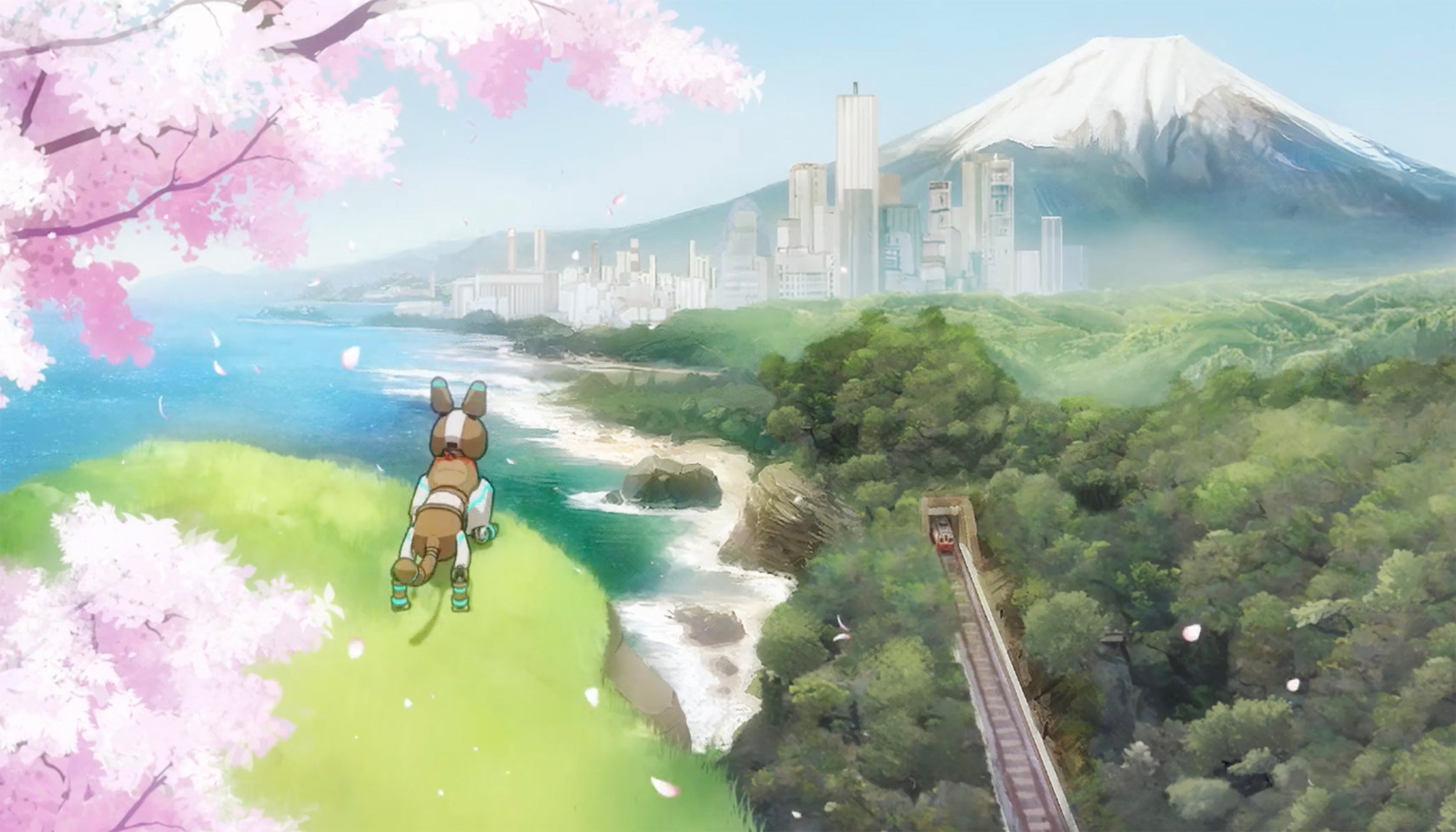
Netflix Japan has become the latest company to catch heat for availing itself of A.I. generating tools, with fans calling foul after the streamer released its new anime short, The Dog and the Boy, which was partially generated by A.I.
On January 31, Netflix Japan revealed the short on Twitter as a joint animation outing by the streamer’s Anime Creators Base initiative, anime producer Wit Studio, and A.I. development company Rinna. The three-minute film depicts a robot dog’s search for its human owner, the titular boy, against a futuristic backdrop, and is bookended by a brief visual explainer of how the anime’s backgrounds were developed using Rinna’s A.I. technology.
“As an experimental effort to help the anime industry, which has a labor shortage,” read the tweet, “we used image generation technology for the background images of all three-minute video cuts!”
According to the video, the backgrounds were first hand-sketched, before “A.I. Generation” took over, adding color and texture. The landscapes were then further revised by hand, a step that refined the lighting within the scene. In the credits, the background designer on the film was credited as “A.I. (+ Human).”
Screenshots from the end credits of The Boy and the Dog, showing a hand-drawn primary sketch (left) and an A.I. generated background (right). Photo: @NetflixJP on Twitter
Responses to the film were overwhelmingly negative, ranging from “massive yikes” to “shameful.” Some followers decried the number of programmers credited over actual artists; others objected to the use of machine intelligence to develop such a warm, poignant short. Most, though, took issue with Netflix Japan’s characterization of a “labor shortage” in the anime industry, saying that animators, rather than being unavailable, simply needed to be better compensated.
“So instead of fixing the industry work space as a whole, ya’ll are finding a way to possibly replace artist[s] to produce shows faster?” wrote one user. “Like I get the idea of helping the industry, but imo a better help would be fixing the work space as a whole.”
Netflix Japan did not respond to a request for comment.
Screenshot from The Boy and the Dog. Photo: @NetflixJP on Twitter
Per Netflix’s figures, anime is one of the most beloved categories on its platform, watched by more than 120 million households in 2020.
In 2021, that popularity led the streamer to launch the Netflix Anime Creators Base in its Tokyo offices, aimed at “bolstering our amazing anime lineup,” with a built-in lab to test creative technologies such as virtual reality and motion capture. The Dog and the Boy is the initiative’s first to adopt generative A.I. technology.
Screenshot from The Boy and the Dog. Photo: @NetflixJP on Twitter
But while the global anime market continues to thrive, generating some $24 billion at its height in 2019, Japanese animators see little of those returns. As surfaced in recent years, anime artists are severely overworked and underpaid; according to an accounting by Vox in 2019, a freelance anime artist could earn as little as ¥200 (less than $2) per drawing.
As artistry remains prized in anime—its frames, with their scrupulous detail and evocative color, take up to five times longer than average to draw—the industry has also largely been hesitant, even resistant, to turn to machine intelligence in its creation or production.
That stance is distilled in a viral clip from a 2016 documentary on the making of the anime short Boro the Caterpillar. Newly resurfaced in December 2022 alongside the emergence of A.I. art generators, it captures Hayao Miyazaki, the co-founder of Studio Ghibli, Japan’s leading animation studio, voicing his disdain for generative A.I. after sitting through a presentation of the technology’s capabilities. “We humans,” he said, “are losing faith in ourselves.”
“I would never wish to incorporate this technology into my work at all,” the director added. “I strongly feel that this is an insult to life itself.”